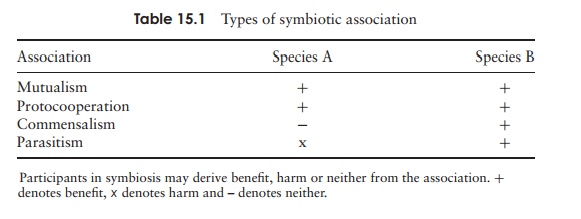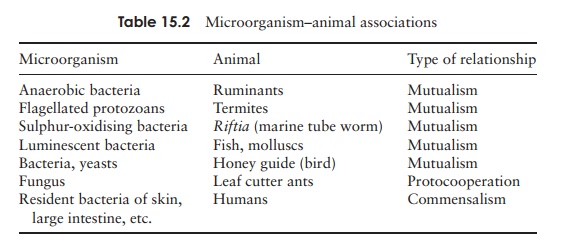Chapter: Essential Microbiology: Microbial Associations
Microbial associations with animals
Microbial
associations with animals
Termites are insects belonging to the order Isoptera
that are found particularly in tropical regions. Their famous ability to
destroy trees and wooden structures such as buildings and furniture is due to a
resident population of flagellated protozoans in their hindgut, which are able
to break down cellulose. Termites lack the enzymes necessary to do
Acetogenic and methanogenic species compete for the carbon dioxideand
hydrogen produced by the protozoans. The former contribute more acetate for the
termite to use, whilst the latter produce significant amounts of methane. Some methanogens
exist as endosymbionts within the protozoans.
In other types of termite, no resident population of
cellulose digesters is present. Instead, the termite ingests a fungus, which
provides the necessary cellulolytic enzymes.
Another example of a host’s staple diet being indigestible
without the assistance of res-ident microorganisms is provided by the brightly
coloured African bird the honey guide. The honey guide eats beeswax, and relies
on a two-stage digestion process by bacteria (Micrococcus cerolyticus) and yeast (Candida albicans) to render it in a usable form.
At the bottom of the deepest oceans, around
geothermal vents, live enormous (two metres or more) tube worms belonging to
the genus Riftia. These lack any sort
of diges-tive system, but instead contain in their body cavity a tissue known
as the trophosome. This comprises
vascular tissue plus cells packed with endosymbiotic bacteria. These are able
to generate ATP and NADPH by the oxidation of hydrogen sulphide generated by


volcanic activity and fix carbon dioxide via the
Calvin cycle, providing the worm with a supply of organic nutrients. Hydrogen
sulphide is transported to the trophosome from the worm’s gill plume by a form
of haemoglobin present in its blood (Figure 15.1).
Warm-blooded animals such as humans play host in
their lower intestinal tract to vast populations of bacteria. Although some of
these are capable of producing useful metabolites such as vitamin K, most live
as commensals, neither benefiting nor
harming their host. It could be argued, however, that the very presence of the
resident intestinal microflora acts as an important defence against
colonisation by pathogens, thus making the association more one of mutualism.
A number of bacteria, viruses, fungi, protozoans and
even algae act as pathogens in animals, and cause millions of human deaths
every year. A detailed description of these falls outside of the scope of this
introductory text, however examples of diseases caused by each group are
described.


Related Topics